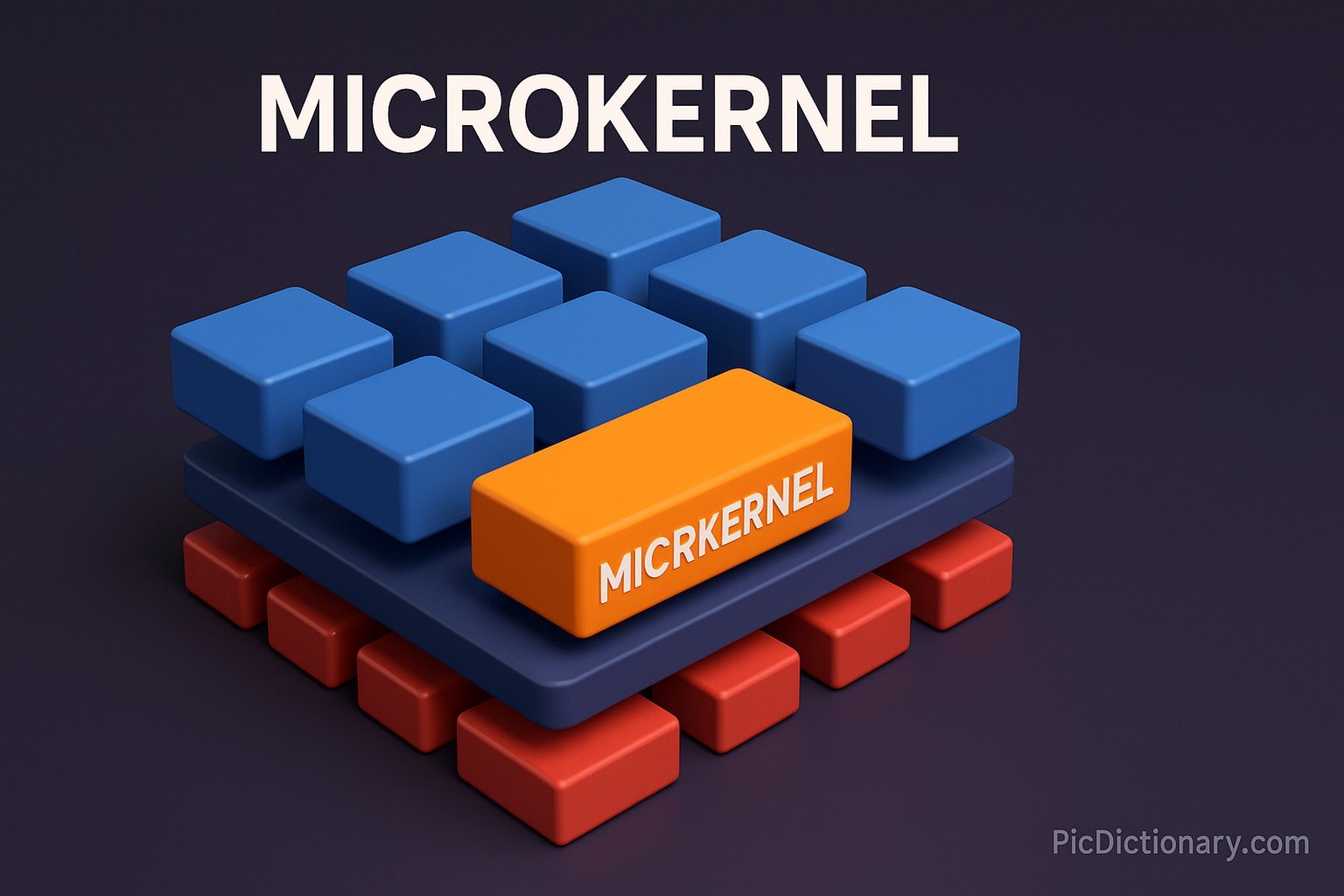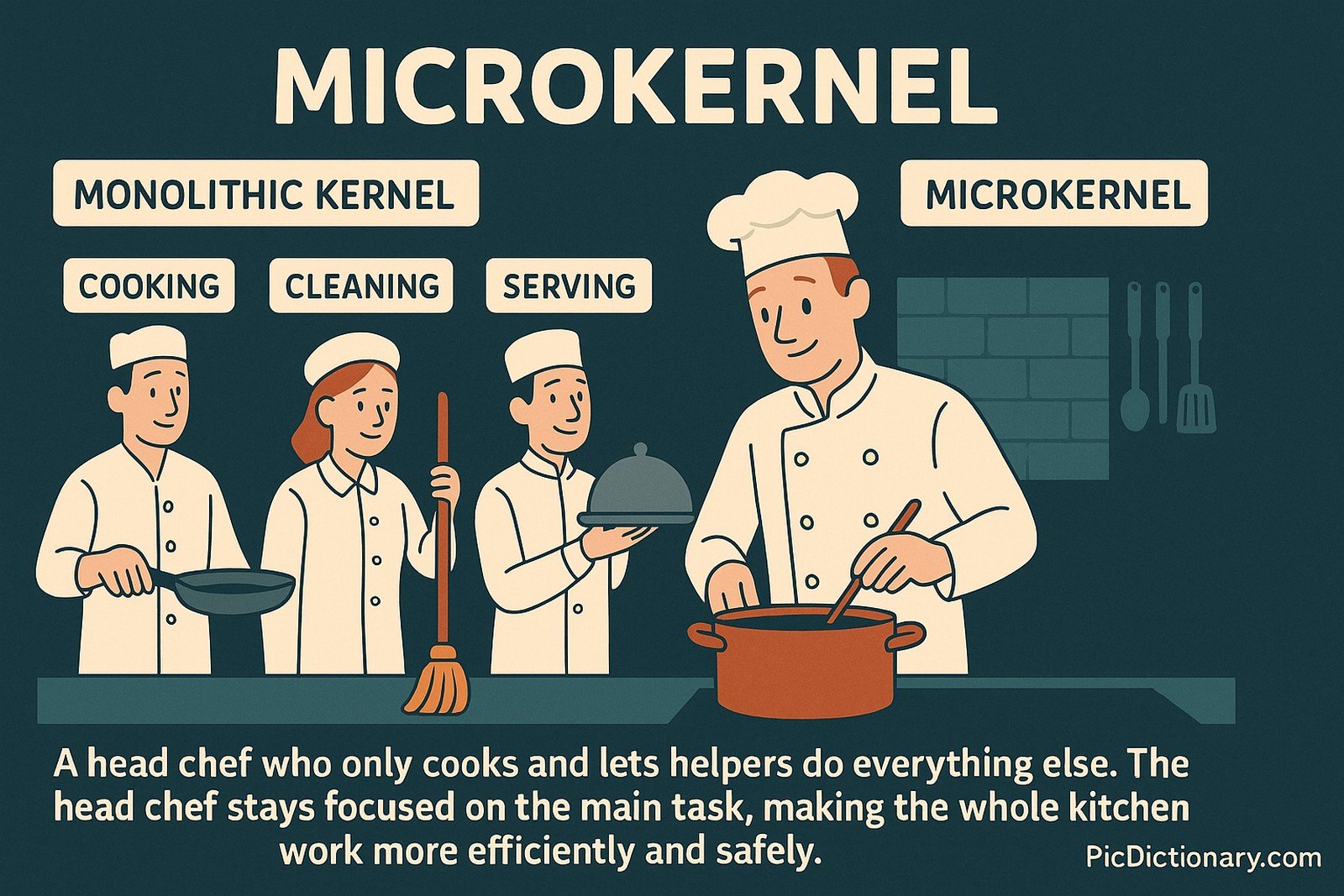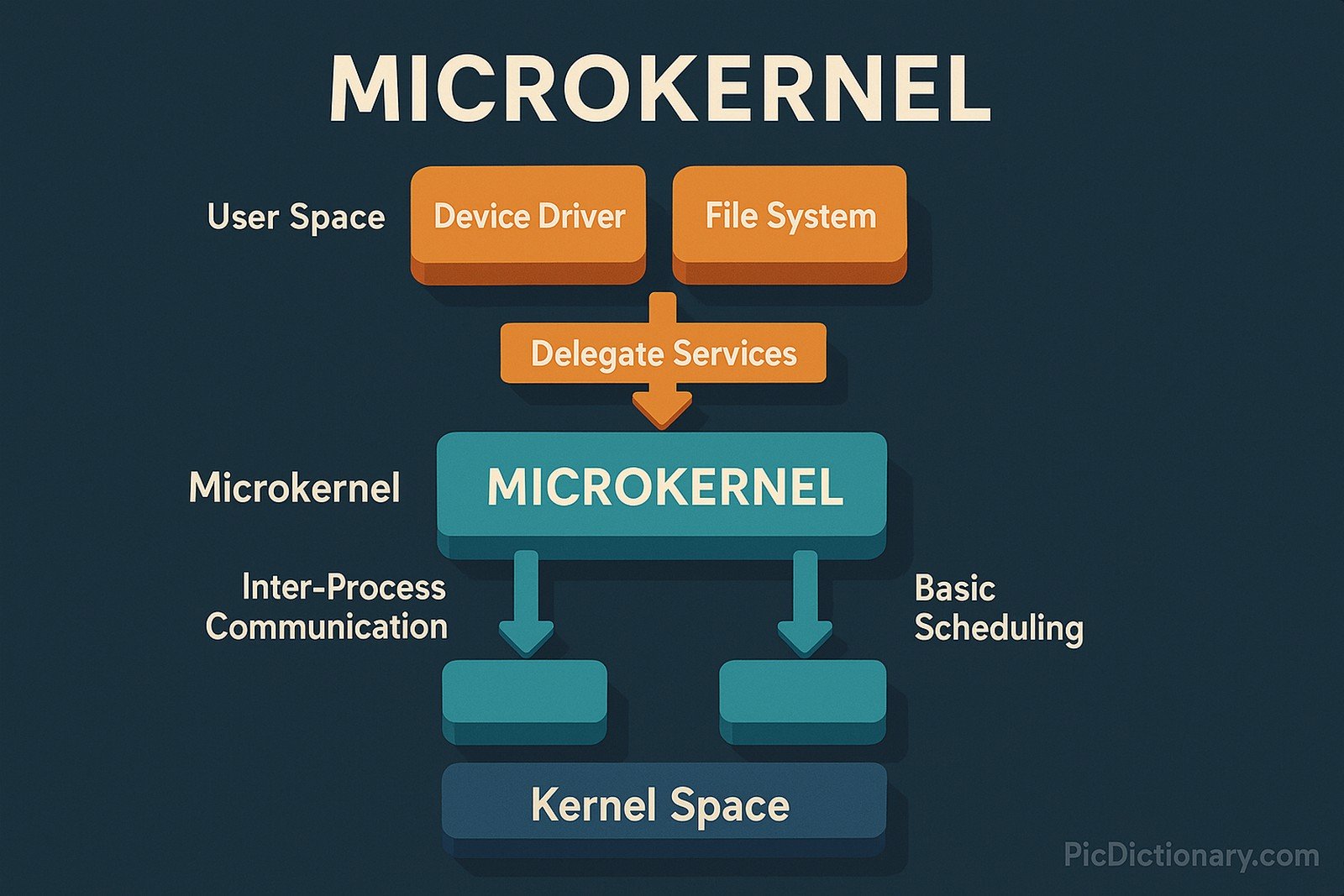Microkernel

Quick Navigation:
- Microkernel Definition
- Microkernel Explained Easy
- Microkernel Origin
- Microkernel Etymology
- Microkernel Usage Trends
- Microkernel Usage
- Microkernel Examples in Context
- Microkernel FAQ
- Microkernel Related Words
Microkernel Definition
A microkernel is a minimalistic approach to operating system design that provides only essential core functionalities, such as inter-process communication (IPC) and basic scheduling. Unlike monolithic kernels, which include extensive system services within the kernel space, microkernels delegate most services, like device drivers and file systems, to user space. This design enhances system stability, security, and portability by isolating critical kernel functions from other components.
Microkernel Explained Easy
Imagine your computer’s brain is like a big kitchen. A monolithic kernel is like a chef who does everything—cooking, cleaning, serving. But a microkernel is like a head chef who only cooks and lets helpers do everything else. The head chef stays focused on the main task, making the whole kitchen work more efficiently and safely.
Microkernel Origin
The microkernel architecture was developed in the 1980s as an alternative to traditional monolithic kernels. One of the first major implementations was the Mach microkernel, which influenced the development of macOS, Windows NT, and other modern operating systems.
Microkernel Etymology
The term “microkernel” comes from “micro-” (meaning small) and “kernel” (the core part of an operating system).
Microkernel Usage Trends
Microkernels have seen fluctuating popularity over the decades. Initially, they were explored for academic research but later found real-world applications in embedded systems and real-time environments. With growing cybersecurity concerns, microkernel-based systems are gaining renewed interest.
Microkernel Usage
- Formal/Technical Tagging:
- Operating Systems
- System Architecture
- Embedded Systems - Typical Collocations:
- "microkernel architecture"
- "microkernel vs monolithic"
- "secure microkernel design"
Microkernel Examples in Context
- The QNX microkernel is widely used in automotive infotainment systems.
- L4 microkernel-based systems are deployed in secure environments, such as aerospace.
- Apple's macOS and iOS are partially influenced by the Mach microkernel.
Microkernel FAQ
- What is a microkernel?
A microkernel is a minimal operating system core that provides only essential services. - How is a microkernel different from a monolithic kernel?
A monolithic kernel includes all system services, while a microkernel keeps only the core functions. - What are the advantages of a microkernel?
Microkernels improve system stability, security, and portability. - What are some examples of microkernels?
Examples include Mach, QNX, L4, and Minix. - Why are microkernels used in embedded systems?
Their small size and reliability make them ideal for critical environments.

Microkernel Related Words
- Categories/Topics:
- Operating Systems
- Kernel Design
- Secure Computing
Did you know?
The microkernel concept played a crucial role in the development of Apple's macOS, which is influenced by the Mach microkernel.
PicDictionary.com is an online dictionary in pictures. If you have questions or suggestions, please reach out to us on WhatsApp or Twitter.Authors | Arjun Vishnu | @ArjunAndVishnu

I am Vishnu. I like AI, Linux, Single Board Computers, and Cloud Computing. I create the web & video content, and I also write for popular websites.
My younger brother, Arjun handles image & video editing. Together, we run a YouTube Channel that's focused on reviewing gadgets and explaining technology.



Comments powered by CComment